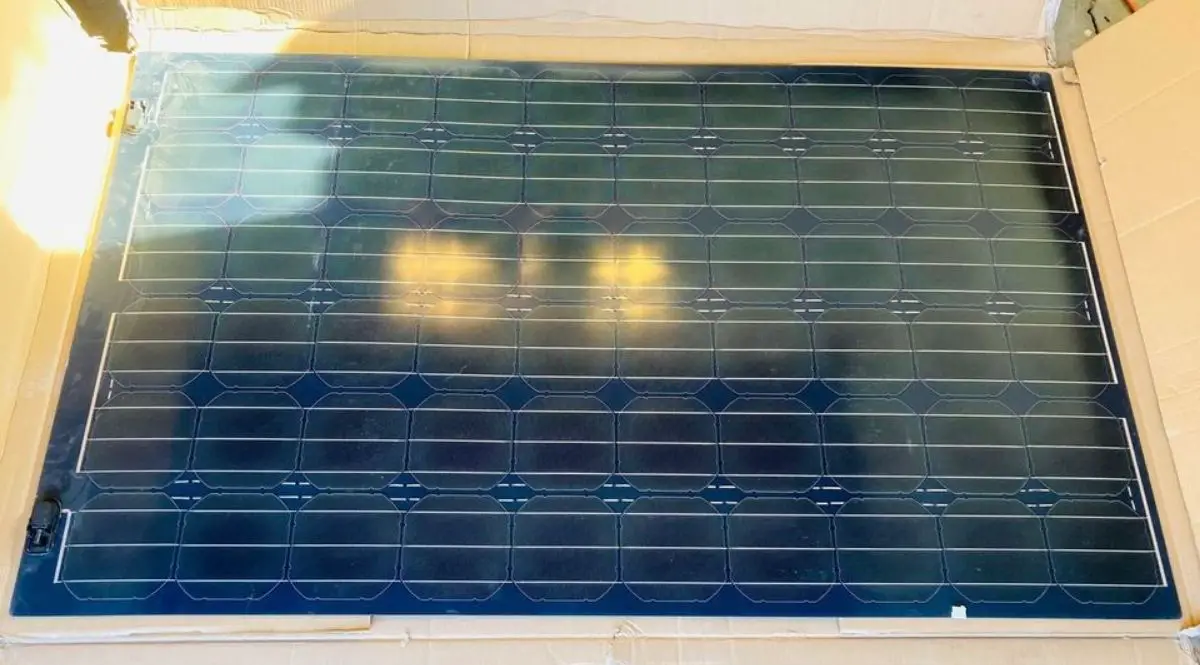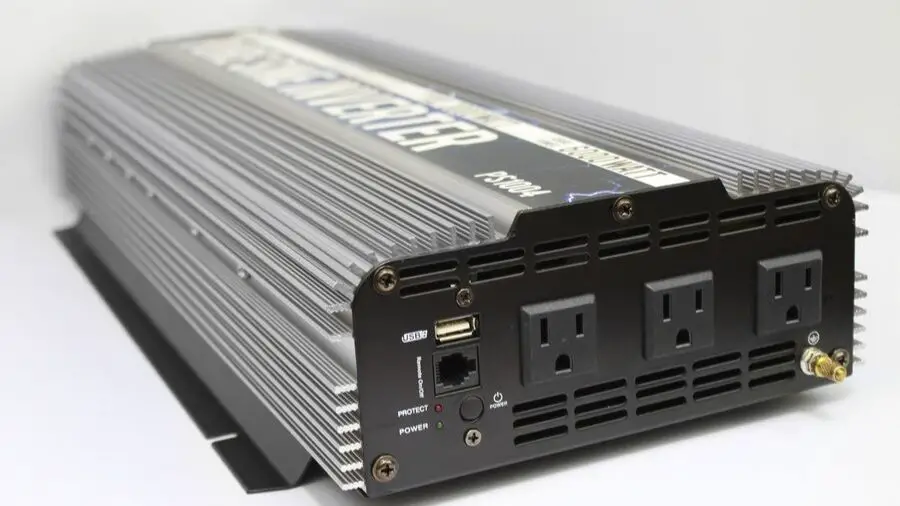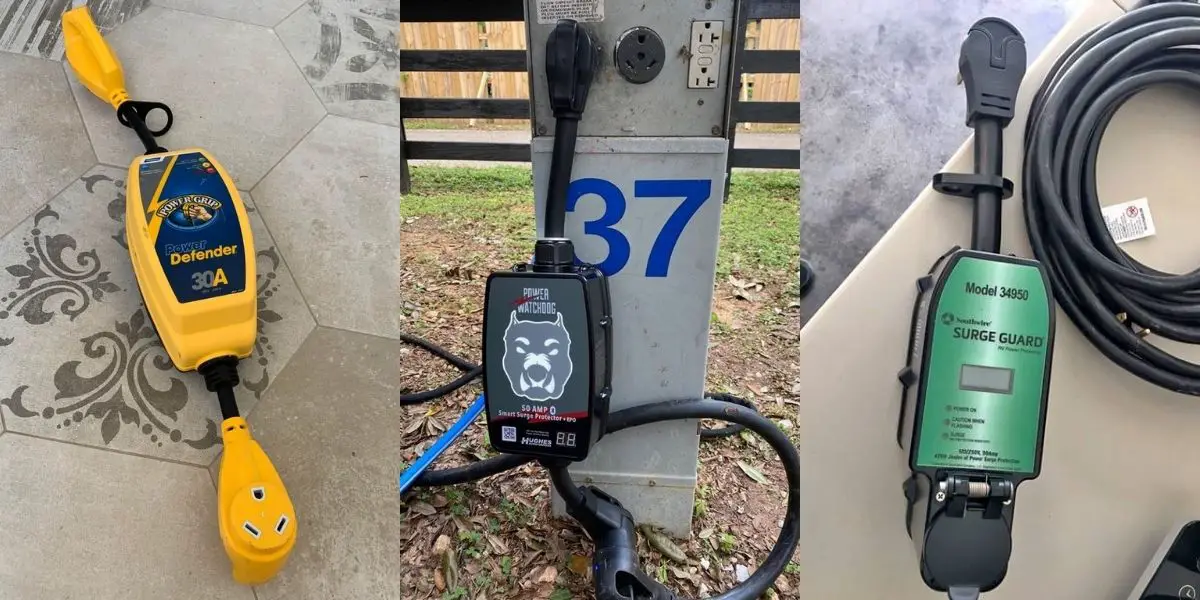Solar Panels are the rage right now. However, investing in a solar panel setup for your RV really will heavily depend on your RV camping lifestyle. If you’re regularly plugged in at an RV park or garage surfing, setting up a solar panel system would be unnecessary.
If you’re just in need of some power for a short trip, then portable solar panel kits might be a good option since they don’t need to be installed and you can bring them out when you need them. If your preference is longer boondocking/dry camping trips in sunny locations, &/or would like to be permanently off-grid, then a more permanent solar panel setup would be highly beneficial.
| PROS | CONS |
|---|---|
| – Cost-effective long term – Fewer carbon emissions – No need for shore power, generator, fuel – Quiet – Minimal maintenance – Tax credit and other incentives (if applicable) – Net metering billing strategy (if applicable) | – Upfront cost – Not all solar panels are high quality – Weather dependent (unless you have a big battery bank if it gets cloudy or rainy |
How Do Solar Panels Work?
It makes more sense to explain a little about how solar panels work so you’ll get to appreciate solar panel efficiency and some of the other terms used in the marketing labels. Solar panels are made out of a lot of photovoltaic (PV) cells that generate voltage and electric current by a physical-chemical phenomenon called the photovoltaic effect when light hits the semiconductor material.
Now, you need to know that not all of the sunlight that hits the solar panel will be used (since 30% of the light that hits the reflective surface of the panel bounces off) because solar cells can only use a fraction of the light that reaches the earth (UV (4%), visible light (44%) and infrared (52%).
This explains why you’ll see a lot of emphasis on solar panel efficiencies because it’s how much of the light can be converted into power.
There are a lot of different kinds of semiconductor materials used for solar panels, the most popular one being silicon which is part of the first-generation PV cells and the most commercially available.
Silicon happens to get a broader spectrum of useable sunlight without losing too much efficiency due to the material heating up, which is why panels with an active cooling feature can generate more power. The three (3) types of silicon PV cells will explain why some are more expensive/efficient than others:
| Silicon PV Cell Type | Monocrystalline | Polycrystalline | Amorphous (Thin-Film) |
|---|---|---|---|
| About | Single crystal structure allows the electrons in the PV cells to move better which means better electricity flow | The structure allows less room for the electrons to move cheaper to produce | Comes with adhesive back tape cheapest to produce cost-effective |
| Efficiency | 15 – 23 percent | 12 – 18 percent | 9 – 14 percent |
| Life | 25 – 30 years | 23 – 27 years | 20 years |
I won’t cover the second generation (CdTe, CIGS) and third-generation (emerging PV) solar cells since they’re used for utility-scale power stations, space applications, etc. But I will mention that as of the last decade, there have been so many breakthroughs in solar technology with better efficiencies, semiconductor types, and solar cell design like Perovskite solar cells (25.2% efficiency) and Crystalline silicon cells (26.7%), flexible solar panels (that can be used to be wrapped around curved surfaces) and also walkable roof deck solar panel types.
How Do Solar Panels Work On An RV?
Simply put, solar panels on an RV are basically meant to charge your RV batteries, which are connected to your RV’s DC electrical system. If you want to familiarize yourself more with your RV electricals and its DC system, do check out the other article I wrote about it HERE.
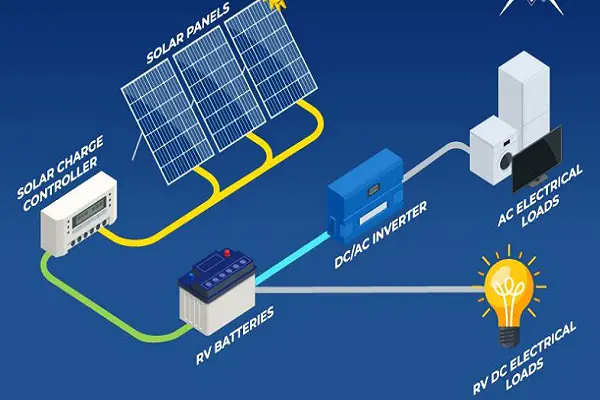
So starting from your solar panels, the flow of electricity will look like this:

I’d like to highlight the importance of having a change controller since it
- regulates the flow of electricity
- prevents overcharging of your battery bank
- prevents battery drainage especially when the battery storage drops below 50%. If you have a Maximum Power Point Tracking (MPPT) controller, it also optimizes the voltage from the solar panels to what’s best for your batteries.
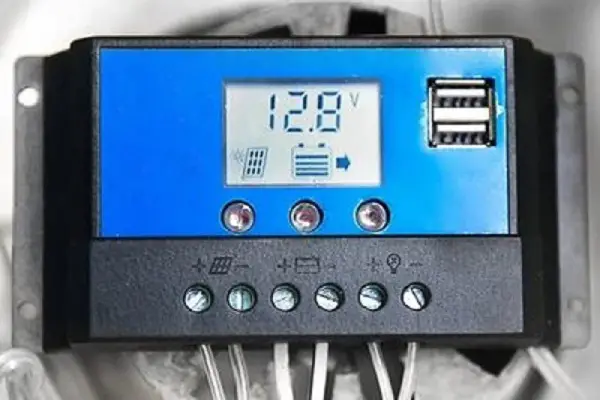
Never directly connect your solar panel(s) to the battery bank since you don’t want to destroy your batteries, regardless of the battery type you have! Just in case you want to understand the different kinds of RV batteries and how to take care of them.
What Type Of Solar Panel Is Best For RVs?
Every year there will be articles coming out with product reviews with the best of the best, and so there will be some consistent favorites when it comes to product performance and consistency such as:
- Renogy 100W 12V Monocrystalline Solar Starter Kit – It’s considered one of the best solar panels for RVs due to the output since it can fully charge a 50AH battery at 50% to 100% in 3 hours. The kit comes with all the accessories you need to install it, and the 30A PWM Wanderer Li Charge Controller addresses multiple types of issues like battery polarity, overloading, short-circuits, over-discharging, etc. And at a price tag of USD199.99, it makes it easy for anyone to get into it.
- WindyNation 100W Solar Panel Off-Grid RV Boat Kit – this is popular not only for the quality but also for the price. Running at USD152.99, the solid polycrystalline solar panel produces 350Wh charge/day, based on the available sunlight. The system can be expanded since the PWM charge controller can handle up to four (4) 100W for 12V system and up to eight (8) 100W panels for 24V systems.
- AllPowers 100W 12V Monocrystalline Flexible Solar Panel – Coming in at USD179.99, what makes this solar panel another good option is that it can be curved upto a max of 30° while providing 23.5% solar efficiency. With the solar panel being flexible, it can be used for permanent and non-permanent installations on irregular surfaces, and considering it’s thickness it can still withstand air, snow resistance and even hail impact upto a certain degree.
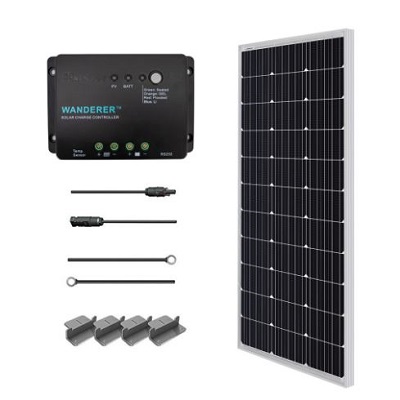
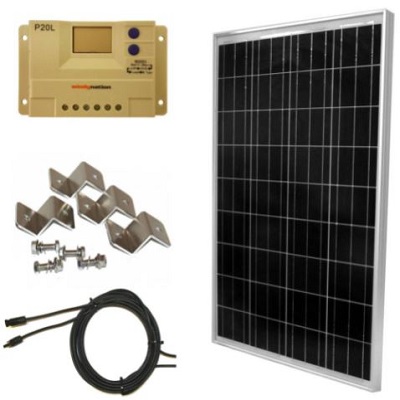
As I mentioned at the start of the article, the best type of solar panel for your RV will really depend on your camping style. From the number of solar panels you need, to whether you want the portable or more permanent roof-mounted type.
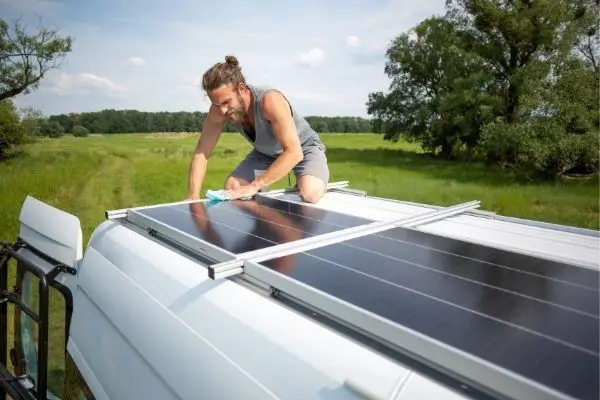
Because there are so many different companies and panels, plus because the technology and prices will continue to keep changing, the most important quality criteria you can use when choosing the best solar panel type for your RV would be:
- The quality of the solar PV panel manufacturing. You’ll need to examine the solar panel PV cells for any errors like bubbles, unevenness or film residues. Checking also the manufacturer and the country of production also can be used to short list the solar panels since some countries like Germany, Japan and the US already have a good reputation in this technology.
- The performance warranty & product warranty of the solar panel. Depending on the type of solar PV cells, degradation is an ageing-related performance loss that manufacturers give a performance warranty for the nominal output. So for example, some manufacturers can grant their solar panel will be able to still give a 90% nominal output during the first ten (10) years, and up to 80% during the first twenty-five (25) years. Product warranty on the other hand corresponds to the legally required warranty for module defects which can differ based on the manufacturer.
- Any available test certificates based on recognized international standards, independent third-party certification companies &/or administrative markings like the International Electrotechnical Commission (IEC), Underwriter Laboratories (UL) and the EEA CE marking, respectively:
- IEC 61215 (for crystalline solar modules)
- IEC 61646 (for thin-film PV modules)
- IEC 61730 / EN 61730 Safety Qualifications
- UL 1703: Standard for flat-plate PV modules and panels (for US only)
- CE-Marking (for European Economic Area): signaled electromagnetic compatibility and product safety
- The efficiency of the solar panel showing the solar radiation percentage that gets converted to electricity.
- The solar panel’s nominal power or power tolerance. Nominal power is specified by the manufacturer as the maximum output (measured in watt peaks). Because each PV module will be slightly different due to how it’s made, the manufacturer will include an +/-5% tolerance range called power tolerance.
- The behaviour of the solar panel when the light is weak or temperature changes. Unless you’re into the technical details, for this criteria, I’d recommend checking this with the manufacturer since there should be a solar panel datasheet showing the temperature coefficients on how much % per grade the current power increase and voltage decrease. Ideally, these temperature coefficients should be small (-0.4 to -0.5%) and even smaller for thin film solar modules.
- Solar panel glass thickness. The stability of the solar PV module is based on the glass thickness, for example: 4mm glass thickness is better than the 3mm one.
- Solar panel junction box adhesion. The location of the solar panel junction box has to have small adhesions if it’s located at the rear side of the solar PV module so it doesn’t accumulate heat (which will decrease the PV cell performance).
- Solar panel frame. There are solar panels that don’t have a frame and usually are better cooled, but if the panel does have a frame, just make sure the frame is cleaned so dirt doesn’t accumulate there.
- Price-performance ratio and availability. Usually higher solar panel efficiency means it would be more expensive as well. This should not be the basis of what would qualify as a “better” solar panel since you’ll need to calculate and compare the ratio to determine if the ratio is justifiable to cover the extra cost over the panel’s life period (which can range from 20-30 years).


